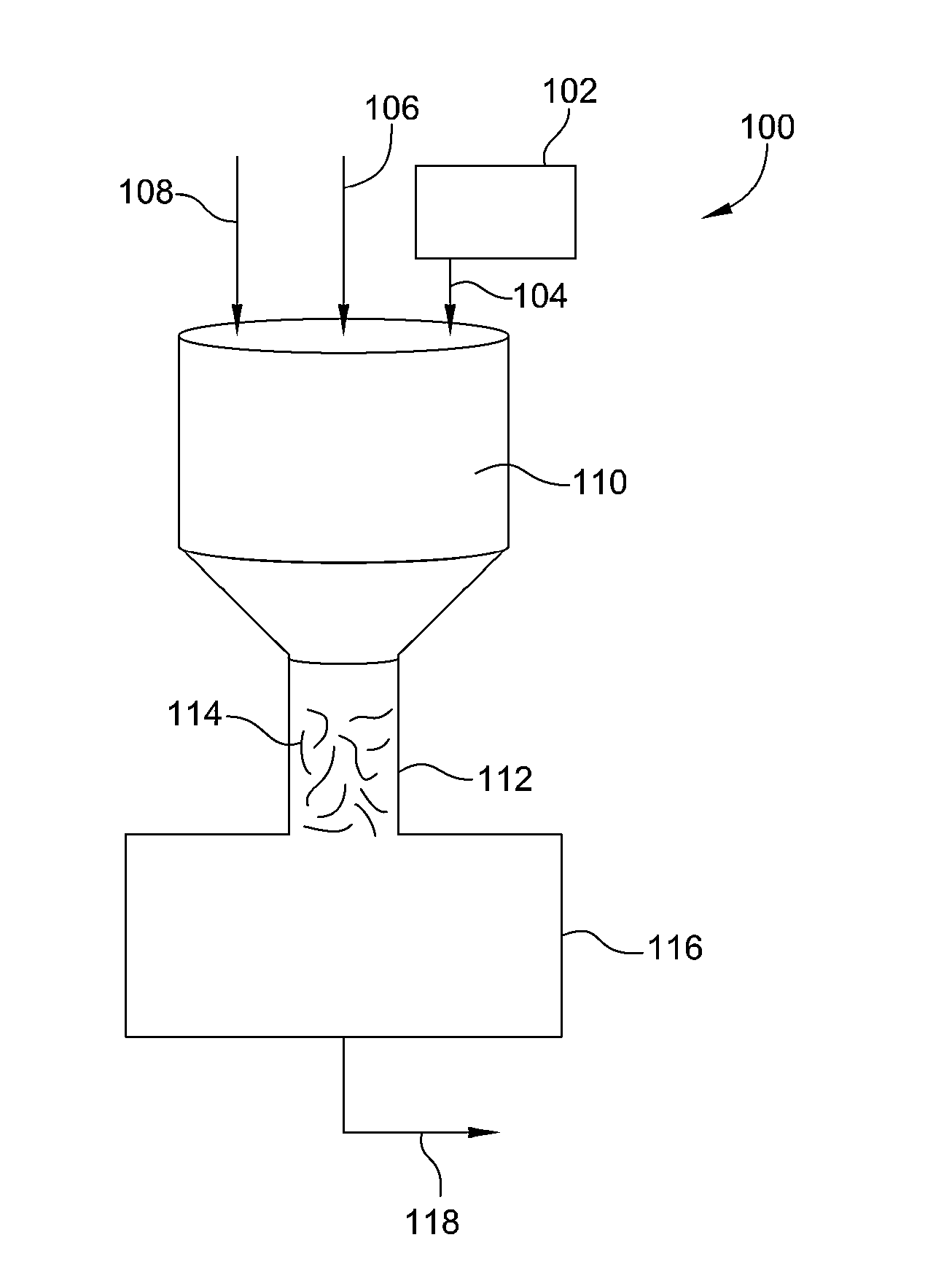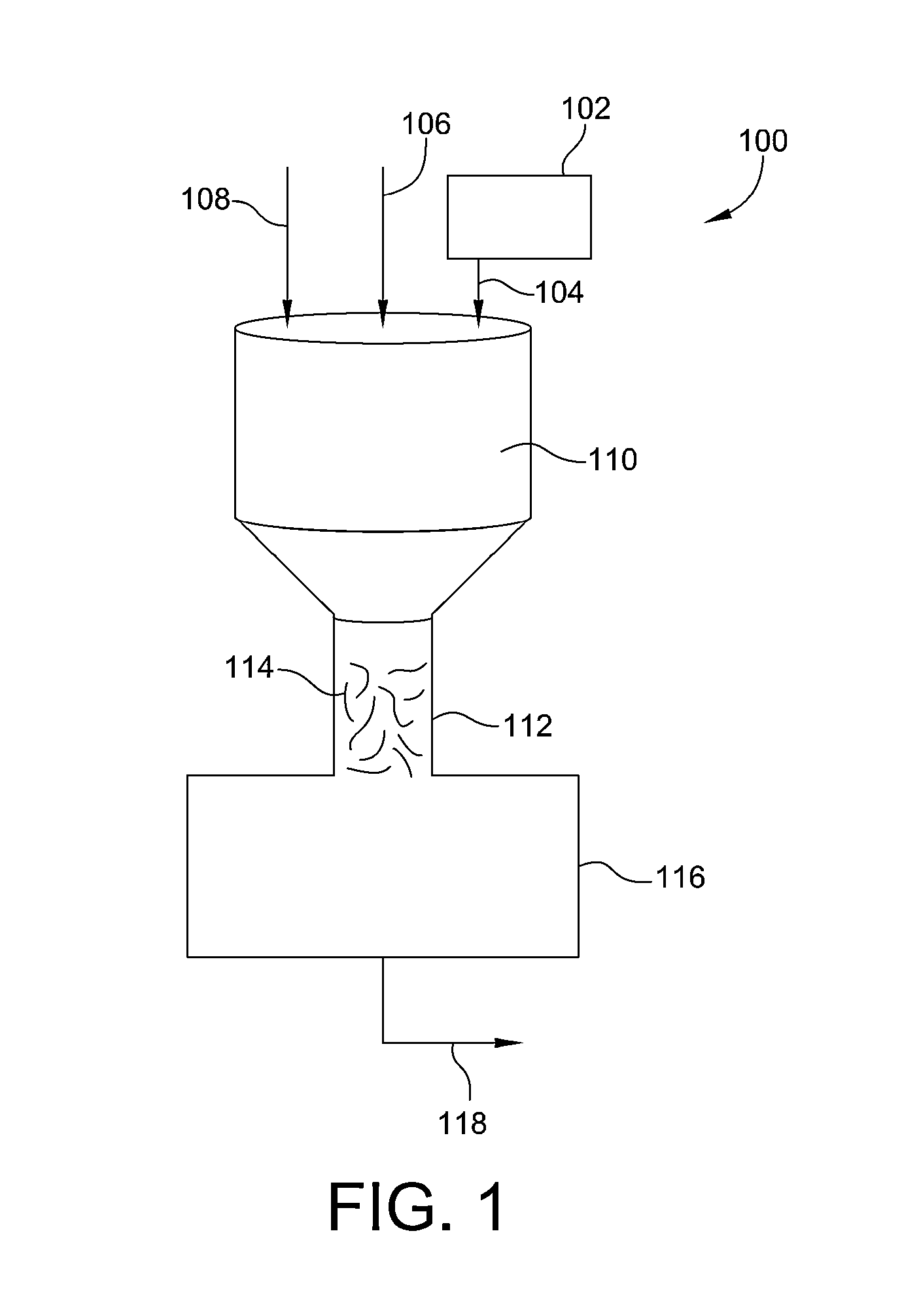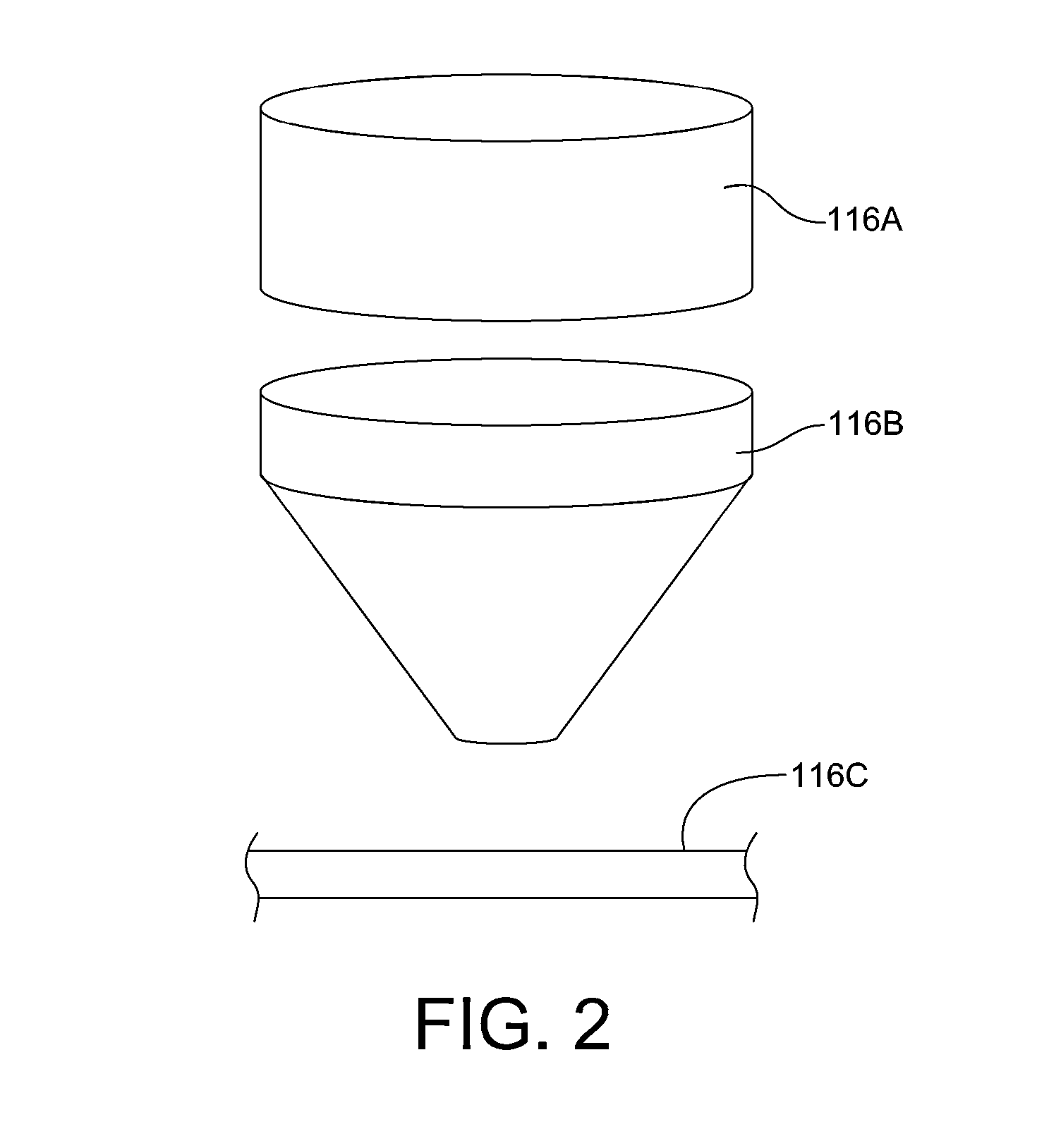Process and system for removing urea from an aqueous solution
a technology of aqueous solution and process, applied in the direction of water/sewage treatment, water/sludge/sewage treatment, chemical apparatus and processes, etc., can solve the problems of chlorinated organic compounds, inability to expand existing treatment systems, and high cost of chlorine us
- Summary
- Abstract
- Description
- Claims
- Application Information
AI Technical Summary
Benefits of technology
Problems solved by technology
Method used
Image
Examples
example
[0068]FIGS. 7a-7e show examples of the process of the present disclosure and examples of the prior art. Test runs G-4, F-4 were redone on account of an erroneous test setup observed in these test runs In examples G-2 through G-5 of the process of the present disclosure, urea, H2O2, and Fe2+ were separately fed to a continuously stirred beaker. The feed rate of the of the Fe2+ was about 1.6 grams per second for each gram per second of the H2O2 being fed. Advantageously, the separately feed of at least one soluble catalyst is fed at a rate between about 1 to 2 grams per second for each gram per second of the hydrogen peroxide being fed into a mix tank. In examples F-2 through F-5 of the process of the prior art, a Fenton's reagent comprising H2O2, and Fe2+ was fed to a continuously stirred beaker of urea. The parameters and results of each example are shown in FIGS. 7a-7e.
[0069]The bar chart at the bottom of FIG. 7e shows a comparison of the oxidation of urea following the process st...
PUM
 Login to View More
Login to View More Abstract
Description
Claims
Application Information
 Login to View More
Login to View More - R&D
- Intellectual Property
- Life Sciences
- Materials
- Tech Scout
- Unparalleled Data Quality
- Higher Quality Content
- 60% Fewer Hallucinations
Browse by: Latest US Patents, China's latest patents, Technical Efficacy Thesaurus, Application Domain, Technology Topic, Popular Technical Reports.
© 2025 PatSnap. All rights reserved.Legal|Privacy policy|Modern Slavery Act Transparency Statement|Sitemap|About US| Contact US: help@patsnap.com



